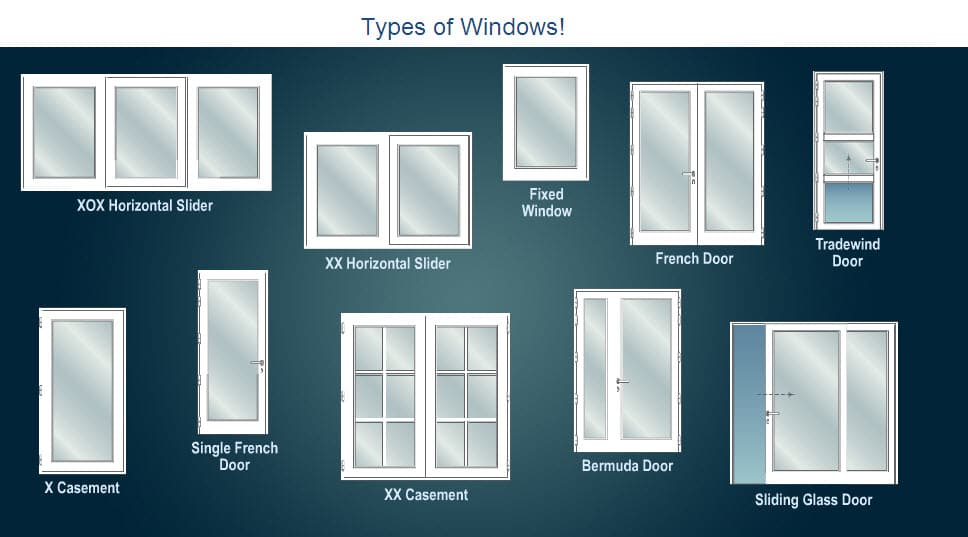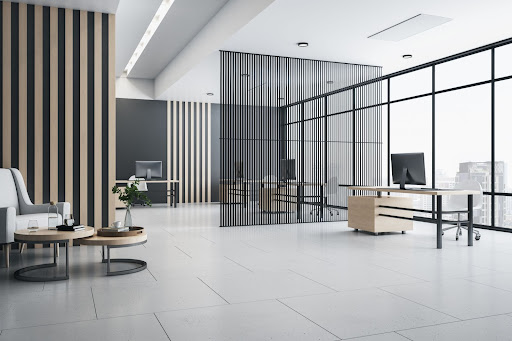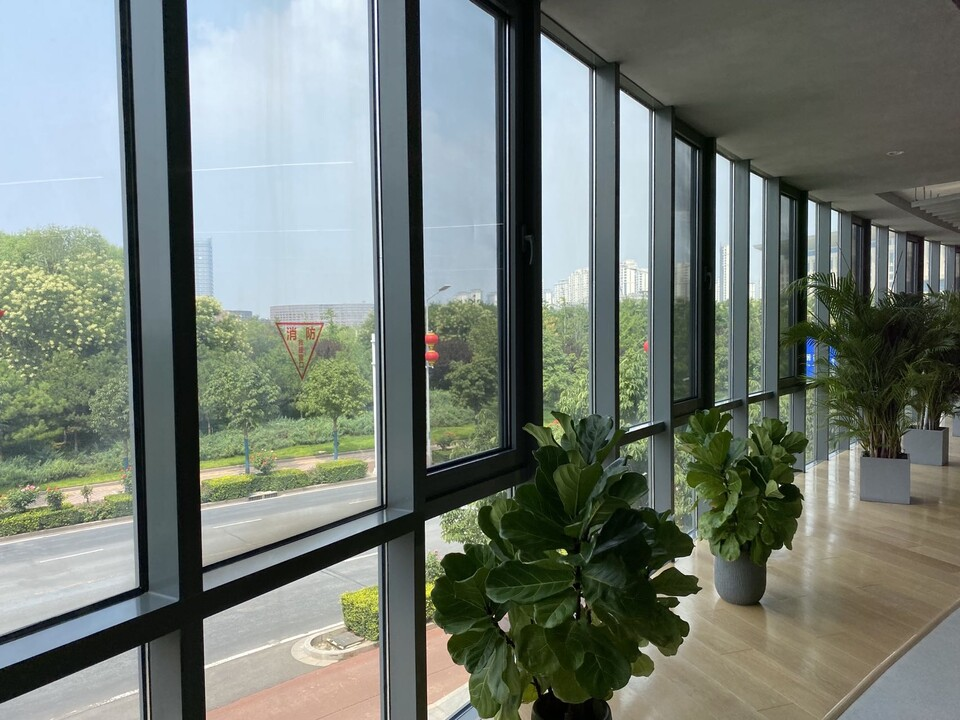Windows substantially impact commercial spaces despite their perceived decorative roles. Well-positioned transparent surfaces can help balance curb appeal, energy savings, employee productivity, and security. In this blog, we’ll explore popular commercial window types and understand how they can help you improve your workplace.
Understanding Commercial Window Types
There are different commercial window types that suit the diversity of business spaces:
Fixed windows come without ventilation or opening abilities. Available in essentially endless sizes, their continuous surfaces maximize transparency and daylighting uninterrupted by rails. Maximize visibility needs commonly fill first-floor lobbies and upper-level conference rooms.
Sliding sash windows horizontally open and close interior spaces using lifting handles driving counterbalanced glass panels. Breathability options balance visibility desires making perimeter office selections ideal. Focused vent tracks prevent unpredictable wind gusts blowing precipitation inside too.
Casement windows hinge vertically oriented glass sheets instead through side hinges. Manual crank handles or concealed internal motors direct fluid outward motion catching quality breezes. Grouped installations allow wide-spanning openings without unsightly meeting rail segmenting. Double hung windows serve traditional aesthetics with both independently operating lower and upper sashes facilitating multi-level ventilation possibilities. Contemporary versions improve against past jamming issues using embedded pulley mechanisms and premium weatherstripping to prevent air leaks.
Commercial awning windows top-hinge outward at sloped angles keeping heavy rainfall buildup at bay while controlling airflows. Pair with non-operable lower pane for ventilation above eye levels in cafes, classrooms and showrooms minimizing distracting street views when Glass openings prove unavoidable along noisy roads or pedestrian corridors. 
Aesthetic Appeal: Making Great First Impressions
Curb appeal dramatically impacts guest reception even before entering business establishments. Windows represent over 50% of typical commercial exterior surfaces visible at distances. This is why careful consideration is important for the initial impression.
Thoughtful alignments, proportional sizing and finishes cohesively tying to the overall building design makes exceptional impressions. Reflect your brand through stylized choices featuring interesting architectural shapes, mullion patterns or decorative glass etchings over generic boxes with windows inserted as an afterthought.
Seek harmonious balances combining elegant transparencies with heat-rejecting sunshades or privacy film overlays where beneficial. First impressions happen quickly and powerfully shape lasting perceptions. Ensure prime reflections through properly aligned windows.
Energy Efficiency: Saving Costs
Building mechanical operations represent over 40% of energy consumed across commercial real estate annually. With windows impacting loss and gain variables significantly, intelligent selections reduce consumption, operating costs and emissions. Insulated glass technologies with multi-pane assemblies filled with inert argon/krypton gas mixtures create interior buffers blocking extreme outdoor temperatures.

Advanced Low Emissivity (Low-E) metallic coatings further reflect infrared heat strands back outdoors for superior insulation effects. Thermally broken frames utilize interior barriers blocking excess heat conductivity through solid window materials themselves. Careful positioning also optimizes solar angles maximum natural light during colder months while heat-rejecting shadings, tints and smart automated sunscreens manage warmer seasons. Balancing aesthetics, functionality, and certified energy performance ratings optimizes attractive spaces not requiring excessive mechanical interventions devouring budgets and depleting non-renewable resources.
Natural Light: Boosting Moods and Productivity
Humans connect with quality lighting, evidenced by sunshine’s instinctually positive effects on moods. Beyond the obvious plant growth benefits for decorative foliage, proper natural light exposure increases commercial employee’s dopamine production and creative thinking performance up to 15%.
Monitor daylight factors across different business zones calculating ratios of interior illumination to outdoor values based on weather. Gauge how floor plans, structural columns and furnishing layouts intersect openings. Try to avoid darker pockets susceptible to artificial overhead glare. Supplement groups lacking ample ambient lighting as needed.
The business benefits from refreshed minds and positive energies will shine through.
Security and Safety Features
Safety remains paramount for commercial windows interfacing public access points. While welcoming transparency proves ideal for retail visual merchandising, unprotected glazing risks after hours intrusions. Prioritize toughened raw glass, multi-layered laminates securing break-ins, and protective films managing glass shard dangers.
Review regional building codes, insurance guidelines and security consultant findings. This will help you determine suitable protections for your unique business risk profile and vision. Worry less through proper diligence improving safety.
Maintenance and Durability Considerations
Windows endure daily environmental stresses that commercial cleaning limitations or material inferiority exacerbate over time. Seek heavier commercial ratings instead of residential assemblies scaled-up modestly. The long-term financial implications justify durable quality now.
Frequent temperature shifts expand and contract window joints suffering eventual seal failures prompting foggy insulating glass unit (IGU) replacements running thousands per opening.
Instead, invest initially in superior commercial seals, framing materials like fiberglass, reinforced locks/hinges and protective finishes sustaining decades of smooth functioning with only basic upkeep perfect for tenants lacking deep service budgets to constantly repair.
Cost vs. Value: Making the Right Investment
Quality window materials, manufacturing processes and custom fabrication precision draw premium lead times and purchase costs. However, exceptional durability, lifespan twice that of lower tiers and energy savings over decades finances initial upgrades through operational savings.
View window selection as appreciating assets directly enhancing comfort, environmental branding, security and eye-catching aesthetics that collectively contribute towards attracting and retaining more customers daily.
Beautiful views create positive emotional connections and memorable experiences worth investing in.
Working with Window Professionals
Proper installations make lasting performance differences for windows challenging achieving advertised potential benefit without them. Insist installers prove proper licensing, bonding and commercial project referrals before permitting work commencement.
Request current vendor training completion certificates issued directly from brand manufacturers too verifying proper methodology competencies critical getting warranty coverage protections down the road.
Precision matters to prevent future window leaks, operation issues or damaged business disruptions. Collaborate early with architects on window specifications optimal for regional climates and orientation challenges. Determine reasonable budgeting for long term returns over short term savings.
Conclusion
Choosing the right commercial window types is more than an aesthetic decision. It’s a smart investment that can elevate your business’s image, enhance energy efficiency, and create a welcoming environment for customers and employees.
By understanding your needs and exploring the best options, you can ensure that your space reflects the professionalism and functionality your business deserves.
Consult local specialists to balance these considerations into optimized solutions showcasing why customers connect with your establishment over competitors through exceptional transparency designs welcoming them inside.

